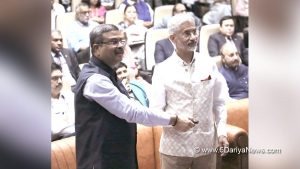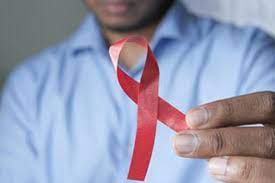Today’s Current Affairs: 5th aug 2023 for UPSC IAS exams, State PSC exams, SSC CGL, State SSC, RRB, Railways, Banking Exam & IBPS, etc
Table of Contents
Spike Non Line Of Sight (NLOS) Anti-Tank Guided Missiles:

The Indian Air Force recently received Israel’s Spike Non Line of Sight (NLOS) anti-tank guided missiles.
- Spike Non Line of Sight (NLOS) Anti-tank Guided Missile (ATGM) is a fire-and-forget anti-tank and anti-personnel missile with a tandem-charge high-explosive warhead.
- It is developed by Rafael Advanced Defense Systems, a defence technology company based in Israel.
- It is available in man-portable, vehicle-launched, and helicopter-launched variants.
- Spike missiles are being used by the defence forces of Israel and another 38 countries, including India, Netherlands, Germany, Italy, Peru, Spain, Belgium, Brazil, Canada, UK, Philippines, and Singapore.
- It can hit targets from distances of up to 30 kilometres.
- It uses an electro-optical seeker that enables the launch operator to clearly see targets, unlike missiles reliant on radar or infrared guidance.
- The seeker is also coupled to a datalink that enables the launch operator to control the missile in flight to attack different parts of a tank or select another target, if not abort the strike.
- It can be armed with different types of warheads suited to destroy tanks, air defence systems or for use in urban combat.
Study In India (SII) Portal:

The Education Ministry recently launched the Study In India (SII) portal with a vision to promote Indian education to foreign students.
- Study in India (SII) portal is a dedicated website to provide information about higher education institutions (HEIs) in India.
- Aim is to establishing India as a global hub for education by welcoming students from diverse backgrounds.
- It will showcase the academic programmes in the HEIs covering undergraduate, postgraduate and doctoral programmes as well courses in Indian Knowledge System (IKS) such as Yoga, Ayurveda, classical arts and more.
- The portal will have information about the academic facilities, research support and related information available in the institutes.
- It will be a one-stop spot for student registration, the visa application process, choosing the desired courses and receiving offer letters from the institute.
- It will have the provision for students to apply in more than one institute or course of their choice.
- It will offer a streamlined and well-organised application process for international students seeking higher education opportunities in India.
Einstein Cross:

Astronomers have discovered a stunning, rare example of an “Einstein cross” splitting and magnifying light from the far depths of the universe.
- Einstein predicted the existence of these crosses back in 1915.
- Einstein’s theory of general relativity describes the way massive objects warp the fabric of the universe, called space-time.
- The latest Einstein Cross has some interesting statistics.
- The main galaxy doing the lensing lies about 5.998 billion light-years away. The distant galaxy that it’s lensing is more than 11.179 billion light-years away.
- Thus, the foreground lensing galaxy is giving an amazing look at a galaxy in the early Universe.
Einstein Cross:
- When a massive galaxy sits directly “in front of” a more distant background object (such as a galaxy or a quasar) the distribution of matter around that galaxy and its gravitational effect can “bend” the light from the object as it passes by.
- In this case, Earth, the lensing galaxy and the quasar have aligned to perfectly duplicate the quasar’s light, arranging them along a so-called Einstein ring.
- It turns out that gravitational lensing happens everywhere in the universe, mostly in the form of so-called “weak lensing”.
- Creating an Einstein Cross requires a precise alignment of the lensing body and light source and astronomers refer to this as “strong gravitational lensing”.
Fossils Of Perucetus Colossus:

Researchers have discovered fossils of Perucetus colossus whale in Peru.
- Perucetus colossus on a newly-described fossil of the whale Perucetus colossus dating to more than 38 million years ago.
- Scientists believe that it may have been heavier than a blue whale even though it may not have been as long.
- Researchers guess that the species weighed between 85 and a simply massive 340 tonnes.
- The animal’s bones had an unusually large volume and were also extremely dense.
- This combination of thickening and densification of bones is called pachyosteosclerosis.
- The characteristic is absent in living whales, dolphins and porpoise. But it is present in sirenians, a marine mammal group that includes sea cows.
- Whales that dive deep typically have the ability to completely empty their lungs to plummet into the depths of the ocean but colossus probably lived in shallow coastal areas.
- This would mean that it probably dived with air in its lungs. But diving with air in the lungs would make it quite difficult to stay near the seafloor—that is where the very heavy bones come in.
- The skeletal mass of P. colossus would have been between five and eight tons, which is twice that of the blue whale.
Italian City Of Venice : World Heritage Sites In Danger

Experts from the United Nations Educational, Scientific and Cultural Organization (UNESCO) have stated in a new report that the Italian city of Venice should be added to a list of world heritage sites in danger.
- The list highlights a number of UNESCO World Heritage Sites which are threatened due to factors like armed conflict and war, earthquakes and other natural disasters, pollution, poaching, uncontrolled urbanisation and unchecked tourist development.
- The UNESCO also sets certain guidelines and criteria under the 1972 World Heritage Convention, which decide, whether or not, a property is faced with specific and proven imminent danger or threat.
UNESCO
- It stands for United Nations Educational, Scientific and Cultural Organization.
- It is specialized agency of the United Nations(UN).
- The constitution, which entered into force in 1946, called for the promotion of international collaboration in education, science, and culture.
- The agency’s permanent headquarters are in Paris, France.
- Parent Organisation – United Nations Economic and Social Council
- The primary goals of UNESCO are to contribute to peace and security by promoting collaboration among nations through education, science, and culture, and to promote sustainable development and intercultural dialogue.
- UNESCO believes that these areas are crucial for building a more just, peaceful, and inclusive world.
CHD1L Gene:

According to a new study some people of African descent possess a CHD1L gene variant that likely controls human immunodeficiency virus (HIV).
- The Chromodomain Helicase DNA Binding Protein 1 Like (CHD1L), which contains information to make proteins that allow the body to repair DNA damage.
- A variant of the CHD1L gene, specifically present in the African population, has been linked to the reduced viral load (amount of HIV in the blood) of the most common and virulent type of HIV, called HIV-1 (more common and severe retrovirus compared to HIV-2).
- They analysed the DNA of almost 4,000 people of African ancestry living with HIV-1 and found a gene variant CHD1L on chromosome 1.
- People carrying this variant had a low viral load.
- This lowers their risk of spreading the virus and slowing the progress of their own illness.
- The researchers said between 4 per cent and 13 per cent of people of African origin could be carrying this particular variant.
HIV:
- Human immunodeficiency virus (HIV) is an infection that attacks the body’s immune system.
- Acquired immunodeficiency syndrome (AIDS) is the most advanced stage of the disease.
- HIV targets the body’s white blood cells, weakening the immune system.
Gukesh D : Top-Ranked Indian In The International Chess Federation

Gukesh D, a protege of five-time world chess champion Viswanathan Anand, will become the top-ranked Indian in the International Chess Federation (FIDE) monthly rating list for classical chess, surpassing Anand after 36 years
- He will also break into the top 10 rankings for the first time, making him the third Indian to achieve this feat.
- He became the youngest player to defeat World No. 1 chess player, Magnus Carlsen.
- FIDE is the governing body of the sport of chess, and it regulates all international chess competitions. It’s constituted as a non-governmental institution.
Time-Of-Day (ToD) Tariff : India’s New Electricity Pricing System

The article discusses India’s new electricity pricing system, Time-of-Day (ToD) tariff, which adjusts prices based on demand, aiming to reduce consumption during peak hours
- Time-of-Day (ToD) tariff is an electricity pricing system that adjusts prices based on demand, with higher rates during peak hours and lower rates during off-peak hours.
- The goal is to encourage consumers to use electricity when demand is lower, helping to manage energy consumption and grid load.
- This system is being introduced in India in 2024 for commercial and industrial users and in 2025 for other users.
- ToD tariffs are already used in many countries, including the US, UK, and Japan.
- For this system to work, smart meters are needed to track electricity use every 15 minutes.
Good Manufacturing Practices (GMP) Standards:

The government has set a deadline for pharmaceutical companies to implement the revised Good Manufacturing Practices (GMP) standards, aligned with World Health Organisation (WHO) standards.
New regulations:
- Companies with over Rs 250 crore turnover must adopt the revised GMP within six months, while smaller enterprises having a turnover of less than 250 crore have a year.
- Non-compliance could lead to license suspension or penalties.
- The move aims to enhance drug quality and safety, addressing deficiencies found in inspections
- The changes will include a pharmaceutical quality system, quality risk management, and product quality review.
Good Manufacturing Practices (GMP)
- Good Manufacturing Practices (GMP)standards are guidelines and regulations that ensure the quality, safety, and consistency of pharmaceutical products.
- GMP system was first incorporated in India in 1988 in Schedule M of Drugs and Cosmetics Rules, 1945.
- It was revised in 2018, bringing them on par with WHO standards.
- Presently, only 2,000 of 10,500 manufacturing units in the country were found to be compliant with WHO-GMP standards.
Smart Corn : New Genetically Modified (GMO) Corn

A new genetically modified (GMO) corn called ‘smart corn’ has been developed by Bayer to withstand climate change pressures.
- Smart Corn GMO is a genetically modified corn varietal developed by Bayer. It grows shorter and sturdier than conventional corn to withstand high-wind storms caused by climate change.
- This adaptation aims to reduce damage to crops and address the challenges posed by climate-related events.
- Benefits:
- Increased Resilience: Shorter, sturdier stalks make the corn more resistant to high-wind storms, reducing crop damage.
- Addressing Climate Pressures: Smart corn is designed to adapt to climate change-induced challenges, like extreme weather events.
- Innovative Solution: This shows the potential of genetic engineering to create crops that can better withstand climate impacts.
Genetically Modified Organism:
- GMO stands for Genetically Modified Organism.
- It refers to an organism, typically a plant or animal, whose genetic material has been altered through genetic engineering techniques.
- This involves the insertion of genes from one species into the DNA of another to introduce specific traits or characteristics.




